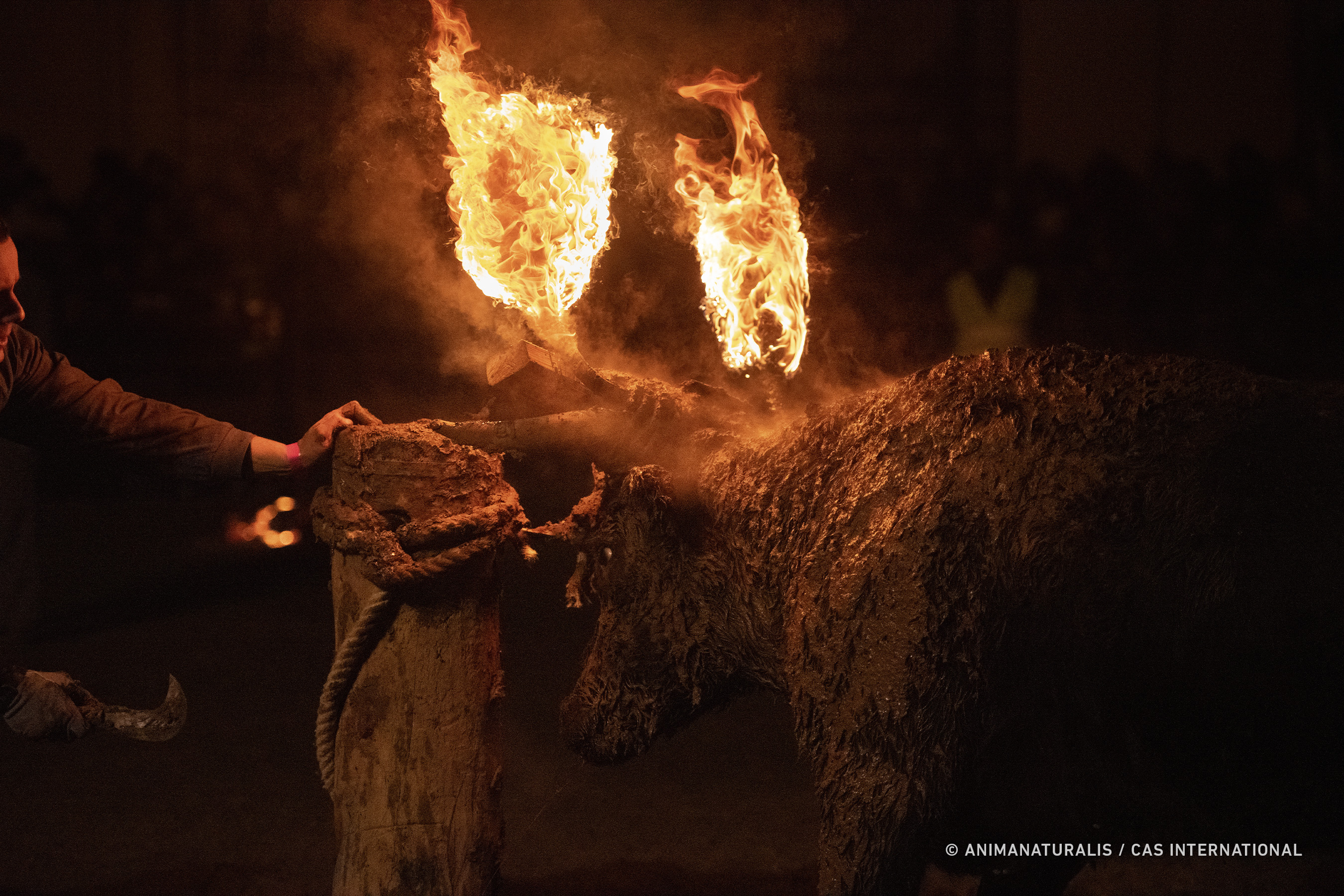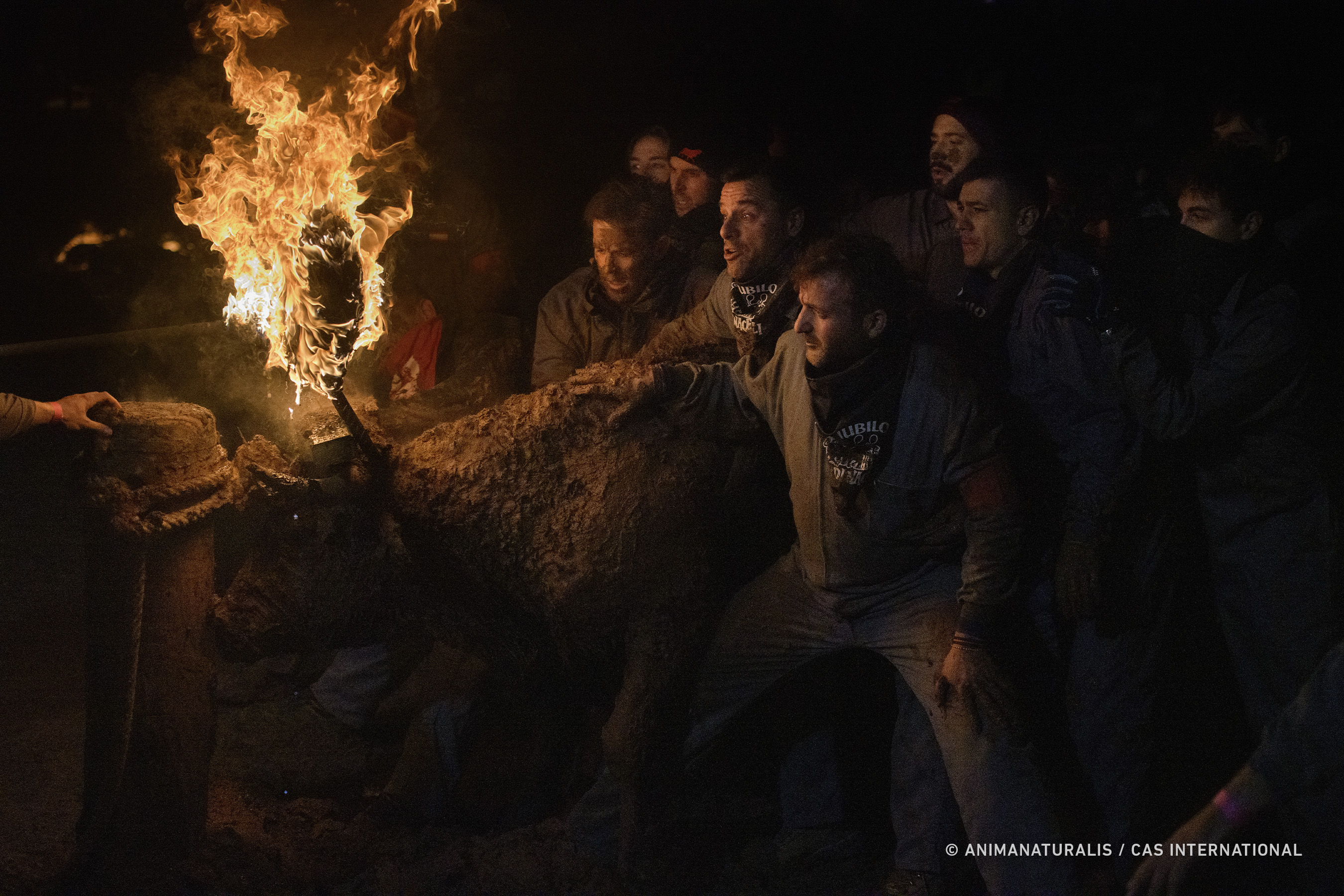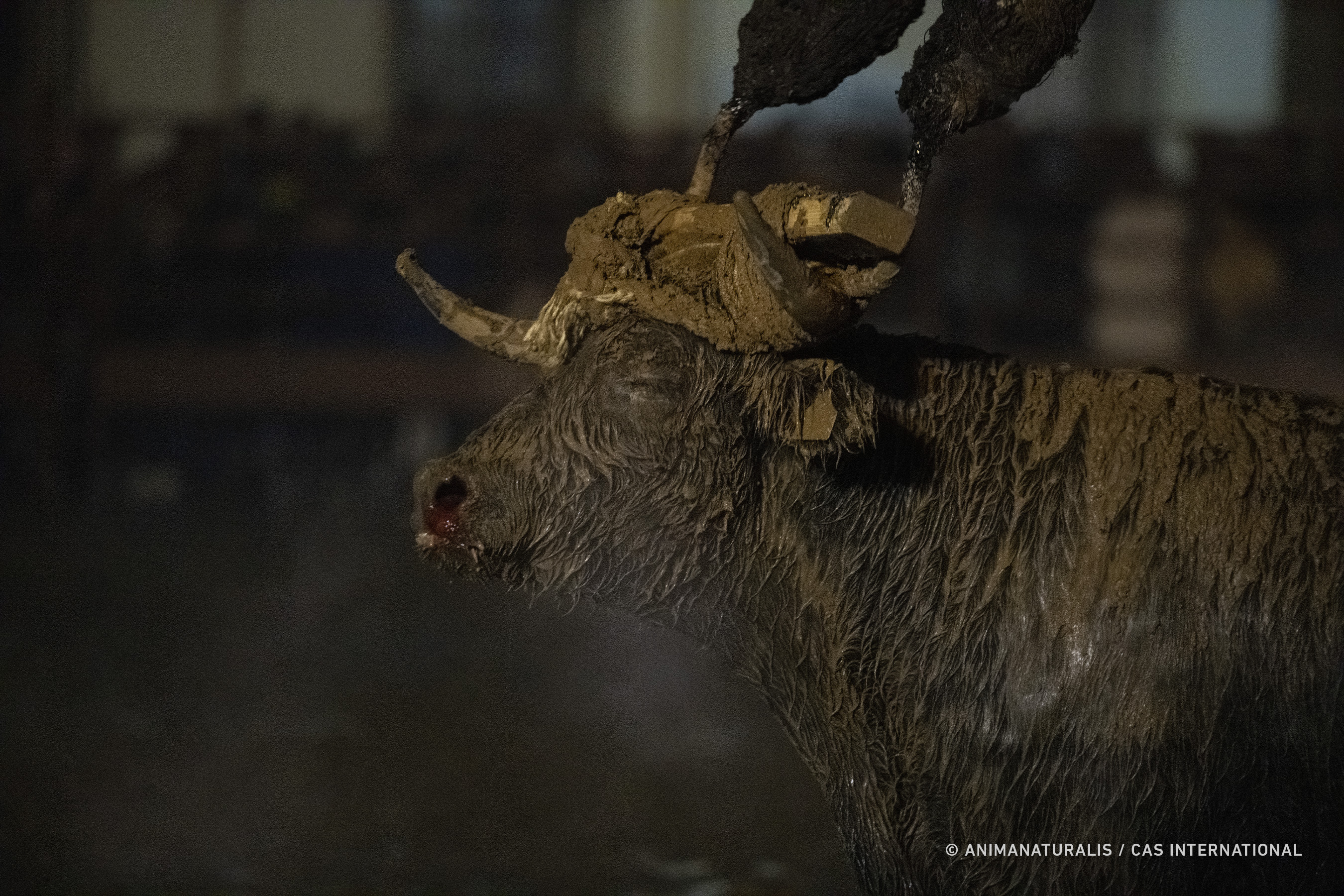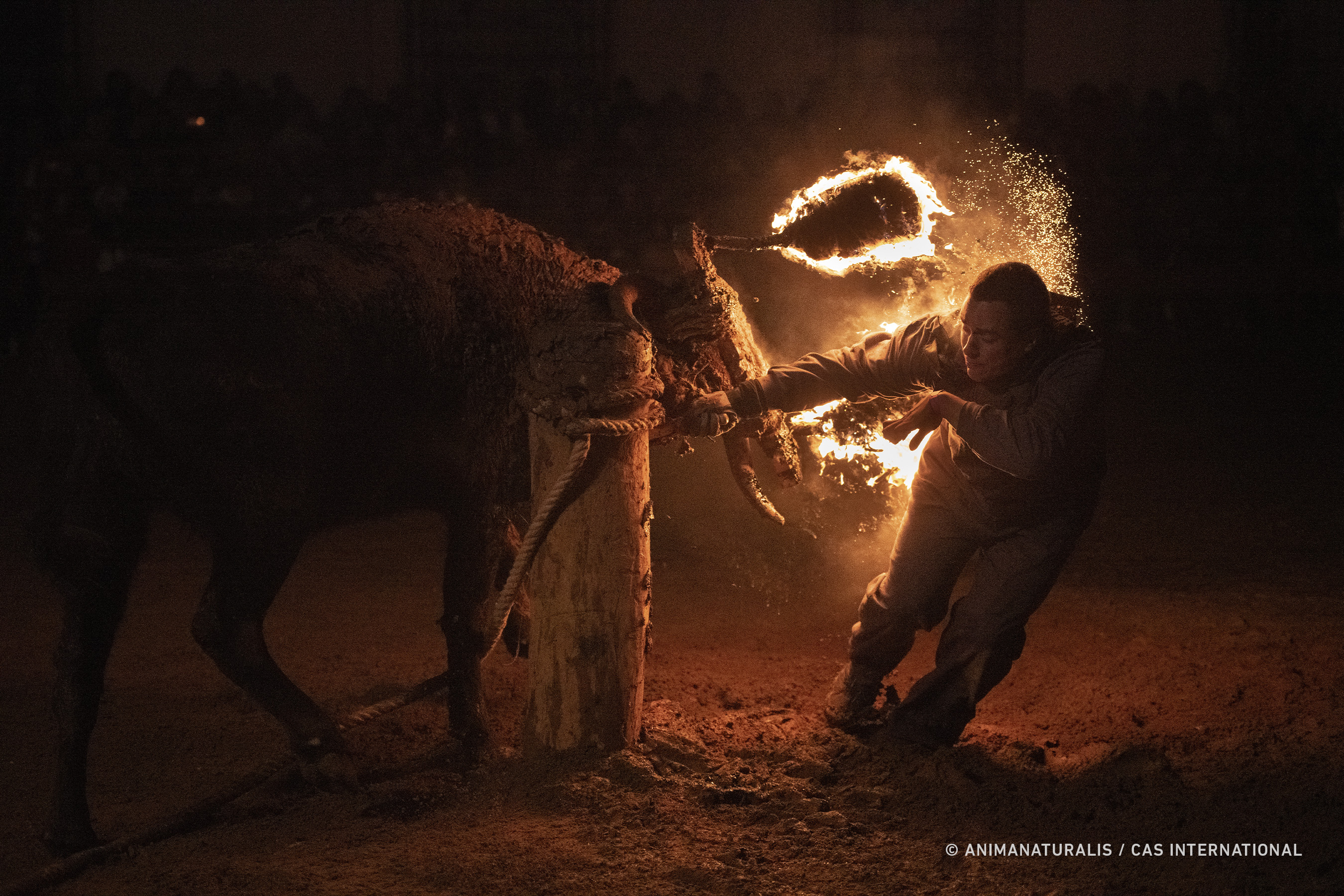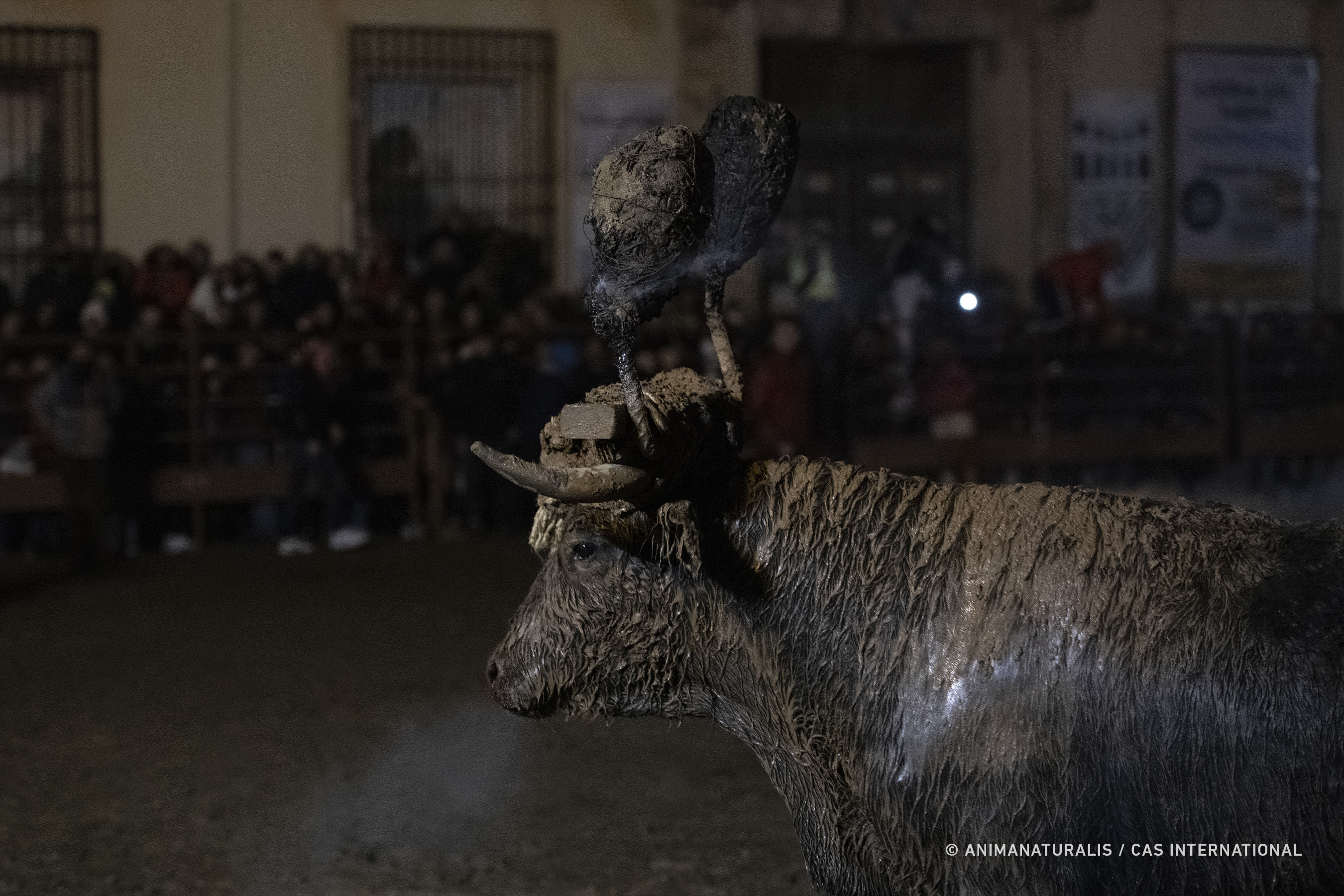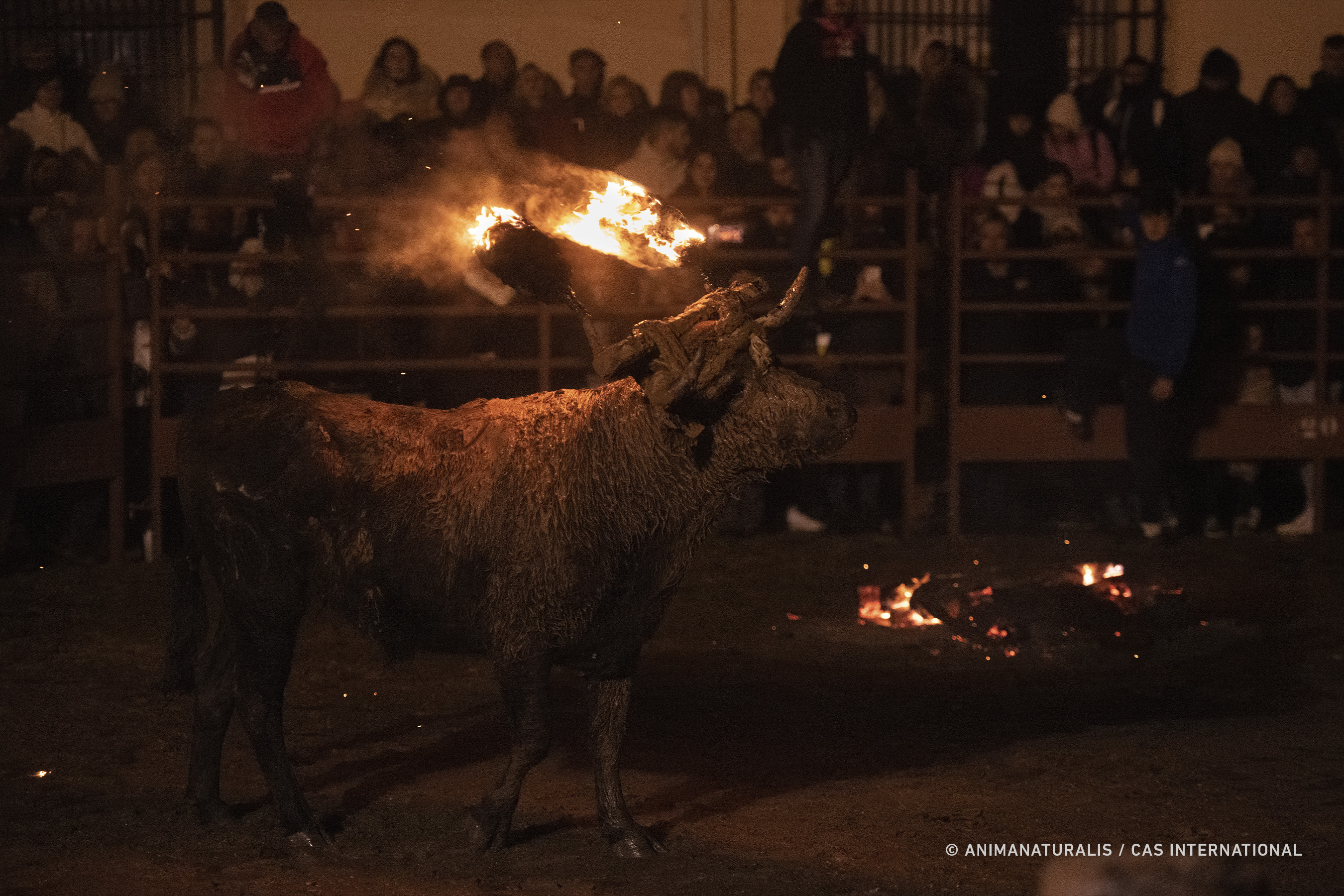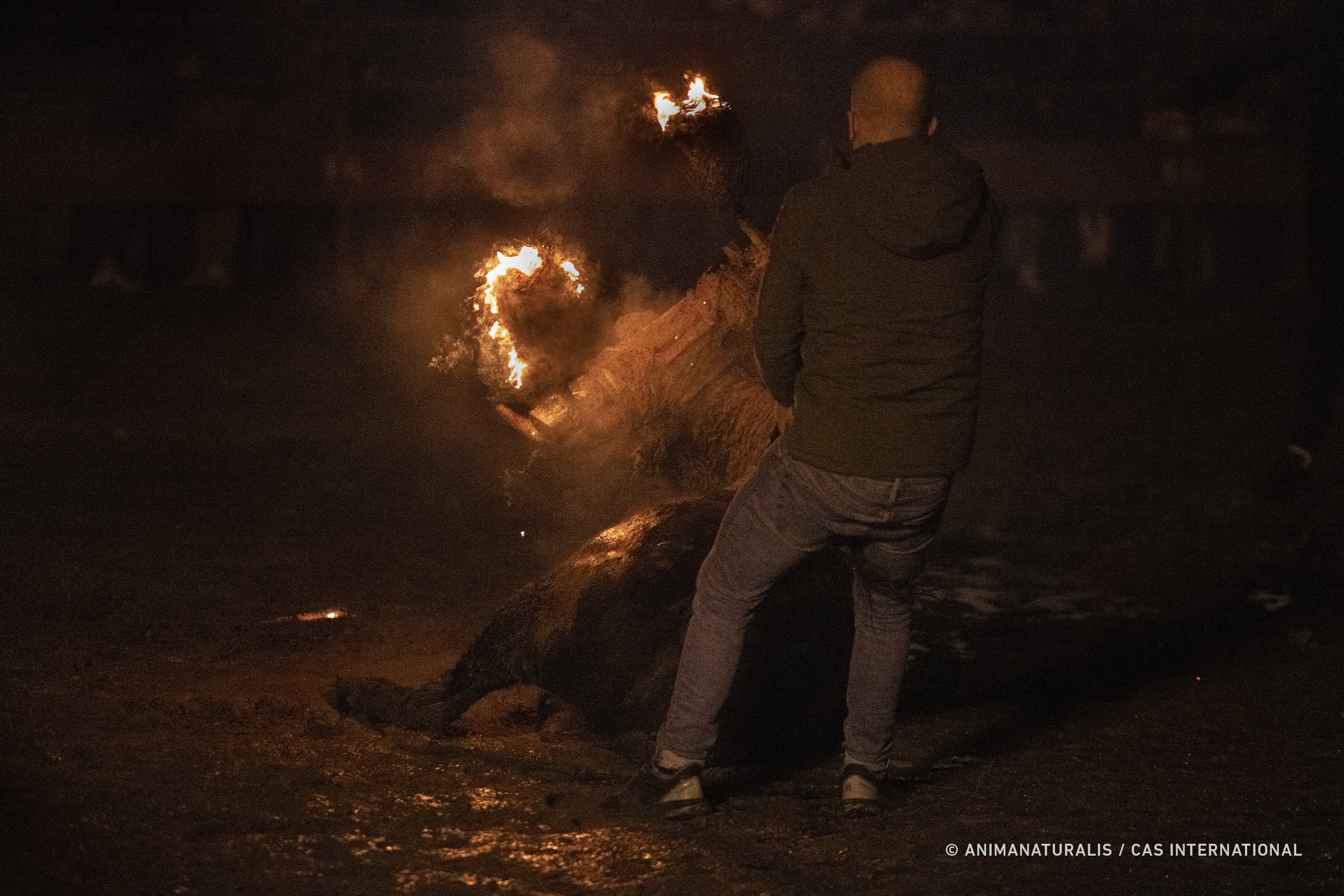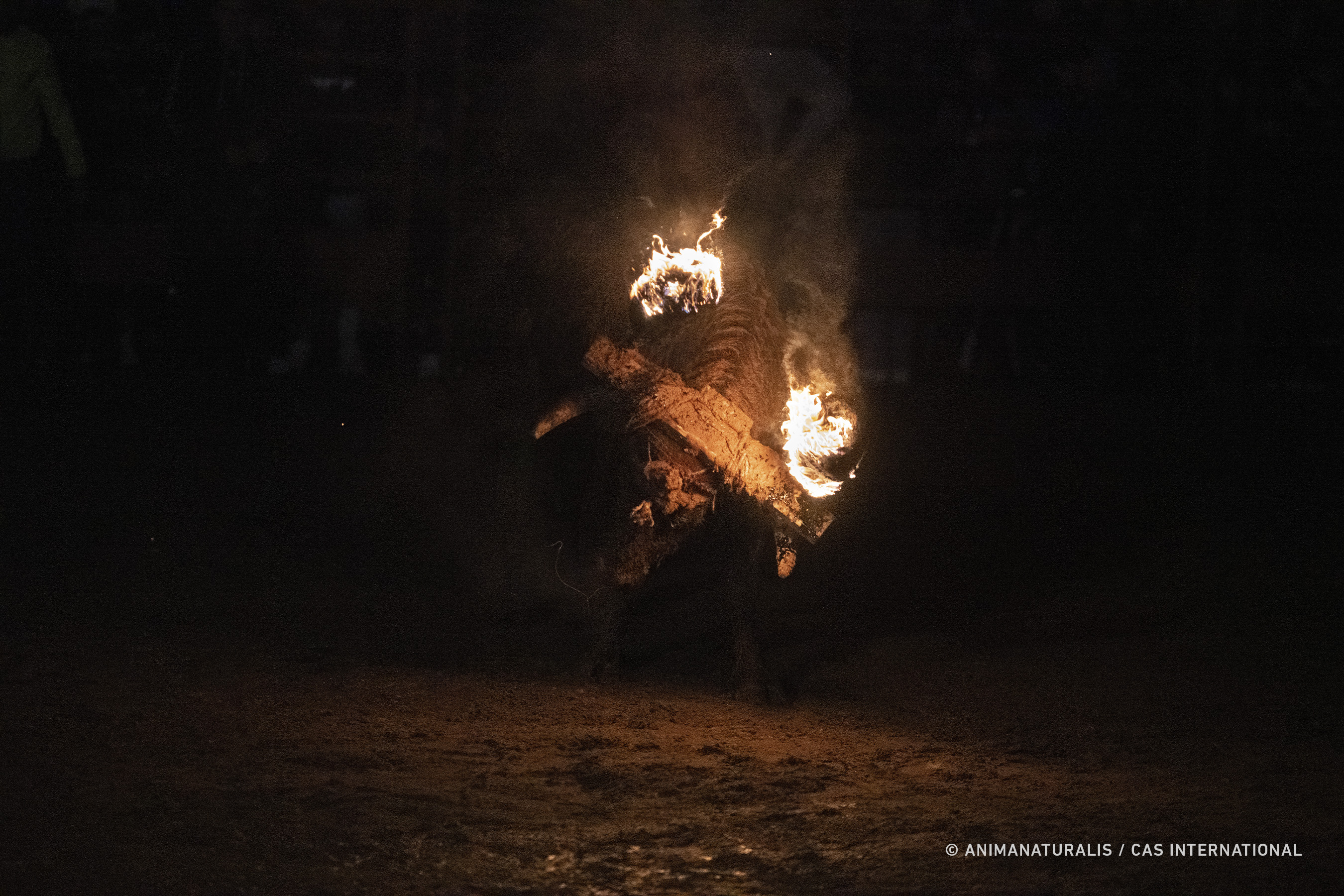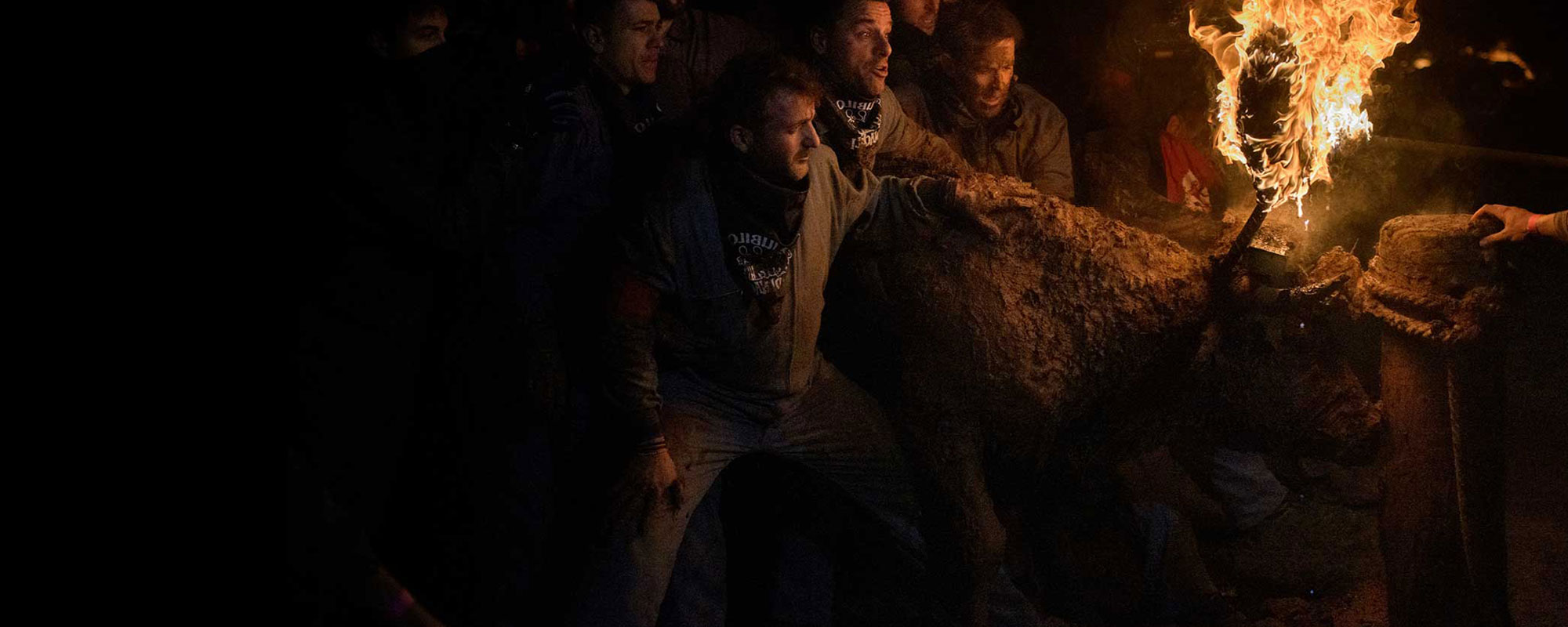Medinaceli, a small corner of Soria, once again finds itself at the center of a dark spectacle that ignites outrage and international condemnation. In this peaceful village of 721 inhabitants, the Toro Jubilo stands as a testament to human cruelty, a stark reminder that, in the 21st century, barbarity can still find its place in society.
Every year, the corral in Medinaceli's square becomes the stage for a gruesome spectacle rooted in animal suffering. The Toro Jubilo is the last remaining “fire bull” with fire in Castilla and León, resisting the evolution of global animal welfare standards.
AnimaNaturalis and CAS International documented the event this Saturday night and we can confirm once again that the suffering of the animal has been undeniable. This time, we have seen how the bull was already leaving the corral with difficulties, with its head twisted, probably due to the weight of the wooden structure on its horns.
The moment of the charge was long and anguishing for the bull, even more than usual, as it remained immobilized against the pylon for more than eleven minutes until the participants managed to set the horns on fire.
We the organizations consider that the animal used this year in Medinaceli was not in a fit condition to participate in the celebration and that its evident discomfort was ignored, since it was incapable of supporting the weight on its head and "it walked stumbling and staggered several times until it fell down", says Aïda Gascón, director of AnimaNaturalis in Spain.
In addition to the stress and exhaustion that can be seen in his gestures, the bull has had to endure the constant pulling of his tail and blows from the fans, who tried to force him to get up to continue with his entertainment.
"We must remember that last year, the bull died as a result of the brutality of the event, which shows the lack of animal welfare and prevention of the organizers", points out Aïda Gascón. "However, it doesn't take the worst to happen for these images to make anyone shudder, the normality of the tradition is already tremendously sad for the animals", she adds.
While regional legislation demands the sacrifice of all bulls used in bullfighting events (Article 23 of Decree 14/1999, of February 8, which approves the Regulations for Popular Bullfighting Events in the Community of Castilla and León), the Municipal Ordinance, Article 5, makes an exception for the Toro Jubilo, stating that "following the age-old custom, it will be spared at the end of the event."
The suffering of these bulls begins when their heads are coated with mud to reduce burns from the fireballs. Subsequently, iron contraptions are attached to the ends of their horns, and flammable liquid-soaked fireballs transform the bull into a living torch. In a desperate attempt to escape the fire, the bull runs, but it is futile; the suffering can endure for an hour or until the fireballs, known as "pez balls," are extinguished.
Despite the absence of visible wounds, such spectacles inflict intense physical and emotional suffering on the bulls. Bulls and other bovines are animals that experience stress, fear, and suffering when separated from their social groups, subjected to unfamiliar noises and stimuli, and handled violently. Transportation, confinement, movement restriction, and hunger also contribute to the stress and suffering of these animals.
"We can identify every detail that causes suffering to animals in “fire bulls” events like the one in Medinaceli, but despite having science and common sense on our side, it seems that the thoughtless desire to derive pleasure from an animal's pain takes precedence in our country", Gascón states. "Tradition or custom cannot justify the immorality of deriving enjoyment from another's suffering; that is intolerable from any perspective".
In events like Medinaceli's, bulls suffer in three dimensions: loss of vision and sensory capability due to constant exposure to fire, constant fear of flames and sudden movements perceived as danger signals, and stress caused by transportation, noisy environments, space limitations, immobilization, and harassment by the public.
Physically, veterinarians have identified two main forms of suffering: metabolic acidosis, caused by the extreme physical exertion to which the bulls are subjected, and muscular injuries resulting from the unsuitability of the bulls for strenuous exercise. In the case of the Toro Jubilo, suffering is an undeniable reality.
Medinaceli represents a moral conflict that demands all of our attention. Tradition cannot justify animal suffering or the stagnation in archaic practices that run counter to our evolving understanding of animal welfare.
It is time for us to reflect on the cruelty hidden behind these customs and demand a shift towards a more compassionate and ethical world, where tradition is not an excuse to perpetuate the suffering of innocent animals.

